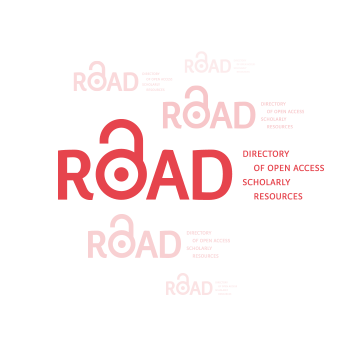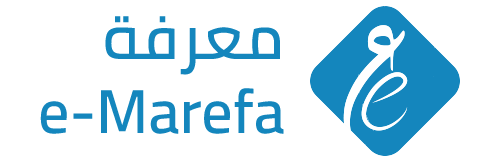Author Guidelines
The Journal of Palestine Ahliya University for Research and Studies is a peer-reviewed scientific journal. This summary will reveal details about our manuscript submission guidelines and processes. We eagerly anticipate your valuable contributions.
Submitting The Manuscript
- Ensure you submit to the most appropriate journal by checking its Aims and Scope.
- Prepare your manuscript according to the Journal Template.
- Add title page with author information and affiliations.
- Thoroughly edit and proofread your manuscript before submission.
- Submit your manuscript electronically through the journal's online platform. Once submitted, authors are required to fulfill their responsibilities throughout the process.
- By submitting, the author(s) confirm that the manuscript has not been submitted, published, or considered for publication elsewhere.
- All authors must meet our authorship criteria.
- Manuscript files for scientific articles must be anonymized; see anonymization guidelines.
- Palestine Ahliya University covers publication costs for the journal, so authors do not need to pay an article-processing charge.
- If applicable, the submitting author will be the main contact for editorial correspondence during the peer review and proofreading processes.
Plagiarism Detection
Plagiarism is strictly forbidden, which includes presenting someone else's work as your own or republishing your own work, either entirely or partially, without appropriate citation.
The Palestine Ahliya University Journal for Research and Studies uses Turnitin to check all manuscripts for plagiarism prior to publication. Authors and researchers can also employ Turnitin to examine their work before submitting it by visiting: https://www.turnitin.com/.
Paper Types
The Palestine Ahliya University Journal for Research and Studies can accept various types of submissions, including:
- Original research articles: These are detailed reports of original studies conducted by the author(s). These articles typically follow a standardized structure, including an abstract, introduction, methods, results, discussion, and conclusion.
- Review articles: These types of articles provide comprehensive evaluations of previously published papers on a particular topic. Review articles provide a critical and comprehensive analysis of the existing literature, identify gaps in knowledge, and suggest areas for further research.
- Case reports: These are detailed descriptions of one or more clinical cases, including patient history, symptoms, diagnosis, and treatment. Case reports are useful in describing rare or unusual medical conditions or in providing a detailed account of a particular patient's experience.
- Editorials: These are opinion pieces written by the editor or members of the editorial board. Editorials often discuss current issues or controversies in the field and offer the author's perspective on the matter.
- Letters to the editor: These are brief, focused articles that comment on previously published articles or provide new insights on a particular topic. Letters to the editor are usually less formal than other types of articles and are often used to start a conversation about a particular topic.
- Conference papers: These are papers presented at conferences or workshops. Conference papers are often shorter than research articles but are still subject to peer review.
- Papers derived from MSc or PhD theses: These are papers that are based on original research conducted as part of a master's or doctoral thesis. These papers are usually written in the format of an original research article and are subject to peer review.
Both original research papers and review articles undergo a double-blind peer review process and must be anonymized before submission. Refer to our Peer Review Policy for more information.
Language
Palestine Ahliya University Journal for Research and Studies accepts papers in Arabic and English (British or American). Before submitting the final version, Arabic and English manuscripts must be thoroughly edited and proofread.
All manuscripts (Arabic and English) must provide Arabic and English title pages, including the title of a manuscript, authors' names, affiliations, email addresses, and keywords.
Please note that the journal will offer this service for international authors who need help providing an Arabic title page.
Manuscript Length
Peer-reviewed manuscripts (academic articles) should range from 3,000 to 9,000 words, including footnotes, references, and appendices.
Editors may permit exceptions for manuscripts up to 10,000 words. However, manuscripts exceeding 10,000 words will be immediately rejected.
Title Page: Title, Abstract and Keywords
Title: The title should be precise, informative, and simultaneously pique the reader's interest. A brief running head, derived from the title, will appear on each page of the paper.
Authors: Articles must list all author names, their respective departments and institutions, and email addresses.
Abstract: Articles must contain an abstract of no more than 250 words. The abstract should be self-contained, allowing readers to determine whether to read the full article.
Keywords: Following the abstract, please provide 3-7 keywords.
Section Headings
Please number section headings. Use a maximum of three heading levels emphasized by orthographic indicators, i.e., capital letters, italics, bold, etc.
Quotations and Endnotes
Please use double quotation marks for quotes. For quotations exceeding 40 words, format them as separate, indented block paragraphs without quotation marks. When citing quotations, it is essential to include the page numbers.
Concerning notes or endnotes, the journal allows their use if they contain additional information. They should be used only if necessary and must be identified in the text by consecutive numbers and listed at the end of each page. Citations within the endnotes must adhere to the APA 7th edition guidelines.
Biographical Details
Include full name(s), current professional affiliation(s), and an email address for correspondence. If there is more than one author, please indicate who the corresponding author is.
Acknowledgements and Funding
All contributors not qualifying for authorship should be acknowledged in a dedicated acknowledgments section. This may include people who offered technical support, writing assistance, or general backing, such as a department head.
In their manuscript, authors are required to disclose all sources of external research funding, and a statement acknowledging this should appear in the acknowledgments section. The authors should describe the role of the funder or financial sponsor throughout the research process, from study design to submission.
Figures and Tables
Adherence to specific guidelines is crucial for maintaining consistency and readability when creating Tables and Figures. All Figures (charts, diagrams, line drawings, web pages/screenshots, and photographs) should be submitted electronically.
It is essential to submit Tables in an editable format. This means that tables should not be submitted as images or screenshots but rather in a format allowing text editing, such as a word-processing document or spreadsheet.
Make sure to place any superscripts or asterisks next to the relevant items, with corresponding explanations provided as footnotes to the table, figure, or plate.
Reference System
The authors should provide the List of references. References are written using the American Psychological Association 7th edition format system.
References should be listed without any numbering. The composition of references should comprise at least 80% primary sources (journals, proceedings) and a maximum of 20% secondary sources (textbooks) published within the last 10 years. Each submitted manuscript must have a minimum of ten (10) references. References should be provided in parentheses in the main body of the text. A reference list in alphabetical order should be supplied at the end of the manuscript.
Failure to adhere to the writing requirements of the references will lead to the manuscript's rejection and exclusion from the double-blind peer-review process.
Open Access Policy
All research articles published in Palestine Ahliya University Journal for Research and Studies are fully open access: immediately freely available to read, copy, download and disseminate free of charge.
Research and Studies are continually released as soon as they have undergone typesetting and final adjustments in the master proof, which have been reviewed and approved by both the authors and editors.
Author(s) and copyright holder(s) maintain the copyright of their research and studies but agree to publish under a Creative Commons CC-BY 4.0 License.
This license allows third parties a free, irrevocable, worldwide, perpetual right of access to, and a license to copy, redistribute, adapt, transform, and build upon the material in any medium or format, even for commercial purposes, as long as the original work is properly cited, a link to the license is provided, and any modifications are clearly indicated. This can be done in a reasonable manner, without implying the licensor's endorsement of the third party or their usage.
Author Self-Archiving
Authors have permission and are urged to share their preprint manuscript, accepted manuscript, and published article (Version of Record) on personal and/or institutional websites and to archive them in institutional or funder repositories, ensuring enhanced public access. Include supplementary material when pertinent.
Once the manuscript has been accepted for publication author(s) are advised to update the status of their manuscript such as “This article has been accepted for publication in The Journal of Palestine Ahliya University for Research and Studies with an updated DOI.
Authors should provide a link from the deposited version to the URL of the Publisher’s website; For example: "The version of the record of this article, first published in The Journal of Palestine Ahliya University for Research and Studies, is available online at Publisher’s website.











